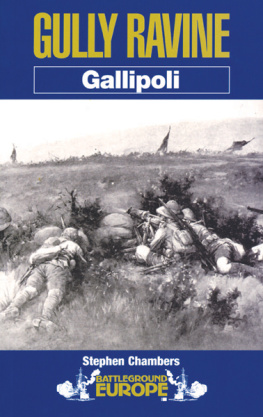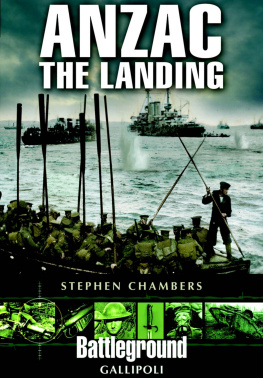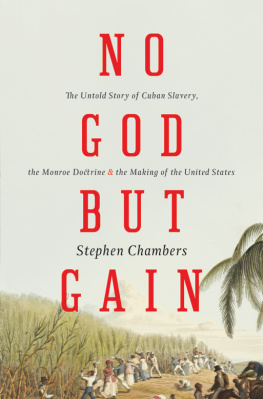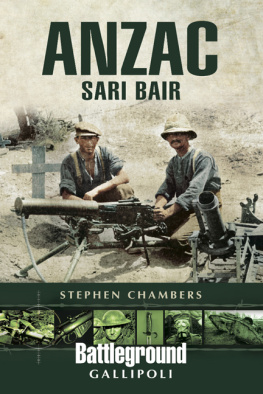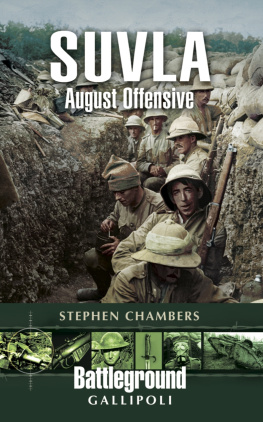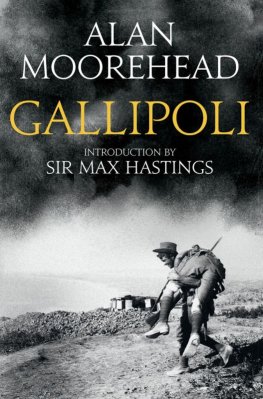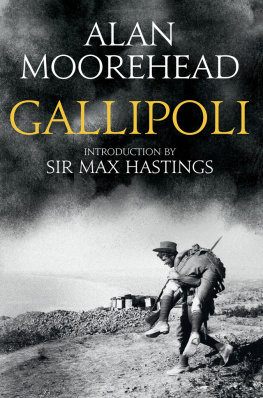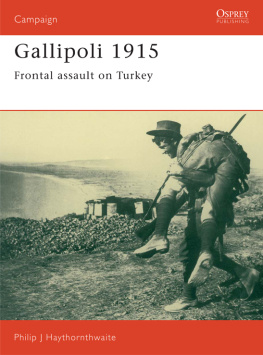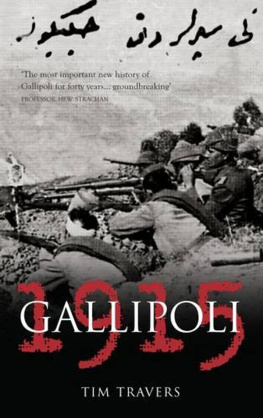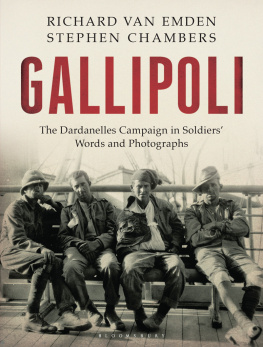First published in 2003 by
LEO COOPER
an imprint of
Pen & Sword Books Limited
47 Church Street, Barnsley, South Yorkshire S70 2AS
Copyright Stephen Chambers
ISBN 0 85052 923 9
PRINT ISBN: 9780850529234
PDF ISBN: 9781783377770
EPUB ISBN: 9781783400270
PRC ISBN: 9781783400010
A CIP catalogue record of this book is available
from the British Library
Printed by CPI UK.
For up-to-date information on other titles produced under the Leo Cooper imprint,
please telephone or write to:
Pen & Sword Books Ltd, FREEPOST, 47 Church Street
Barnsley, South Yorkshire S70 2AS
Telephone 01226 734222
CONTENTS

INTRODUCTION BY SERIES EDITOR
In the May of 2000 I, along with my father, was fortunate enough to go on one of Len Sellers excellent Royal Naval Division tours of Gallipoli, a place where I must say I had never thought I would have a chance to visit. It was a wonderful introduction to a most beautiful part of the world, unspoilt, almost biblical countryside, but now strongly tinged with the haunting events that took place there in 1915. It was during this tour that I first met Steve Chambers, with his great wealth of knowledge and enthusiasm for the men and the battlefield of Gallipoli. An author to fill the gap in the Battleground Europe series had been found, someone to develop the trail in the series that had been commenced by Nigel Steel.
Part of our tour took us for a long walk through Gully Ravine, an extraordinarily evocative site. Although we had general details about what took place here, and some particular points could be easily pointed out, there was so much that we were missing. The result is this book. I had the great pleasure of spending a fortnight with Steve as he worked on this book in September 2001 (and we prepared the basis for future works) and I can testify to the enormous care that he took in placing the ground against the trench maps not as easy as it might sound. Heroic sallies were made through very inhospitable undergrowth and down steep slopes, more often than not rewarded by the discovery of some trench line or mine crater. Wonderful new perspectives of the battlefield were revealed; and distractions aplenty arose from the breathtaking scenery a scenery seemingly exclusively for our pleasure.
The result of these tours and much hard work, as well as a most impressive private collection and an understanding wife, is this first rate addition to the series. Now it is no longer a matter of coming across a deep trench line or finding an artefact; now it is possible to have a greater understanding of the extraordinary heroism displayed by both sides in that ill-fated Expeditionary action. Gully Ravine must rank with Serre and Mametz Wood on the Somme, both still relatively tranquil and quiet spots, in its capacity to move the emotions. This book will go a long way to providing the who, the why and the experiences of men (admittedly from only one side) who fought there.
Nigel Cave
Collegio Rosmini, Stresa

Sandbag dugouts, June 1915. ( Chambers)
AUTHORS INTRODUCTION
The Allied objective in the Gallipoli Campaign was, by capturing Istanbul (then called Constantinople), to force Germanys ally, Turkey and its Ottoman Empire, out of the war. This would open an ice-free sea supply route from the Aegean through the Dardanelles and into the Black Sea to Russia. As well as helping their beleaguered ally Russia, it would also serve the purpose of opening another front against Germany and Austria-Hungary.
The campaign fell into four phases. The first composed the naval operations of early 1915 culminating, on 18 March, in the unsuccessful attempt by British and French battleships to force a path through the Dardanelles.
The second was the landings, beginning on 25 April, by the British and French armies on Cape Helles, and by the Australian and New Zealand Army Corps on what became known as Anzac, north of Gaba Tepe. By early June the Allied force at Helles had made a few advances, but still had not captured Achi Baba or the village of Krithia, their objectives for the first day. At Anzac the situation was even worse; owing to precipitous and strongly defended terrain, no advance was possible, leaving the troops clinging onto the cliff faces on their narrow beachhead.

A panoramic shot of Gully Ravine entrance, September 1915. (IWM Q13400A)
In the third phase the British made a further landing at Suvla, just north of Anzac, on 6 August 1915, simultaneously with offensives at Helles and Anzac. This operation came near to success, but soon became deadlocked in static trench warfare.
The fourth phase, the withdrawal, saw the Peninsula evacuated, first at Anzac and Suvla on the nights of 19/20 December 1915, and then Helles on 8/9 January 1916. After eight months of campaigning the Allies had sustained a quarter of a million casualties, whilst the Turkish losses were estimated at nearer a third of a million.
Today, many people link the Gallipoli campaign with the Australians and New Zealanders. I have often heard people say, Gallipoli, thats where the Australians fought: many do not realise that the British and French fought there, to say nothing of the Indians, Irish, Newfoundlanders and French Africans. Anzac day, 25 April, is a national holiday in Australia and New Zealand, and many visitors to modern-day Gallipoli tend to be from those nationalities. Gallipoli is important to them, as it was here that the spirit of a nation was helped forged. Many visitors make a brief visit to Anzac, today a national park set in one of the most magnificent and picturesque landscapes on the peninsula. Few venture to Suvla, only slightly north of Anzac, and even fewer to the Helles battlefields in the south.
The whole of the peninsula has recently been declared a national historical Peace Park by the Turkish authorities, designed to preserve this area of unique heritage and natural beauty for future generations. Helles, with its views across the Dardanelles to Achilles tomb on Mount Orkanie, and the seven cities of Troy, as immortalised in Homers Iliad, is a battlefield that also has an immense sense of tragedy, and which still shows the scars of war from almost a century ago. It was said by Brigadier-General Sir Hugh Simpson Baikie that Helles was one of Englands greatest tragedies, but was also one of Englands greatest glories.

A dump near the mouth of Gully Ravine, 1915. ( Chambers)
This book concentrates on Gully Ravine, one of those forgotten areas of Gallipoli, on the western side of the Helles battlefield. Here trench fighting raged throughout the campaign, culminating in the Battle of Gully Ravine between 28 June and 5 July 1915. This attack was a successful piece of planning and execution, enabling the British to capture five lines of Turkish trenches, which seriously threatened the Turkish hold on the southern tip of the peninsula. General de Lisle recalled,
in my nine years of war I have seen many thrilling sights but not one compared to the 28th June. Its success was well nigh complete, and the troops appeared to move with the assurance of victory
Next page
